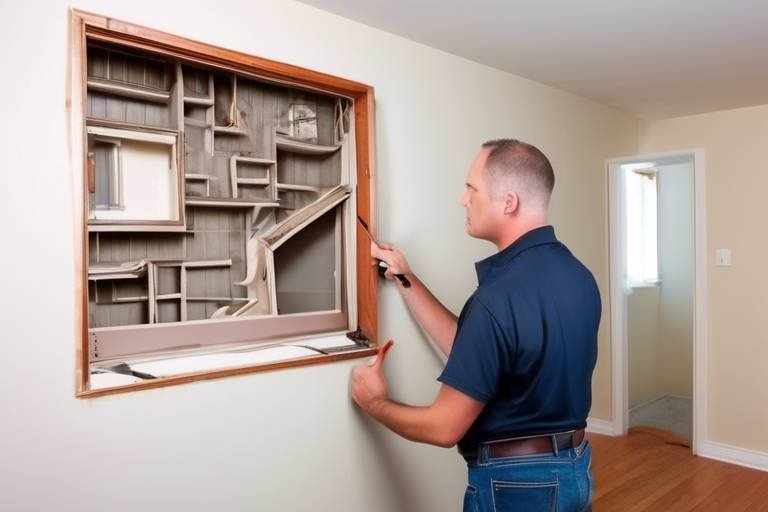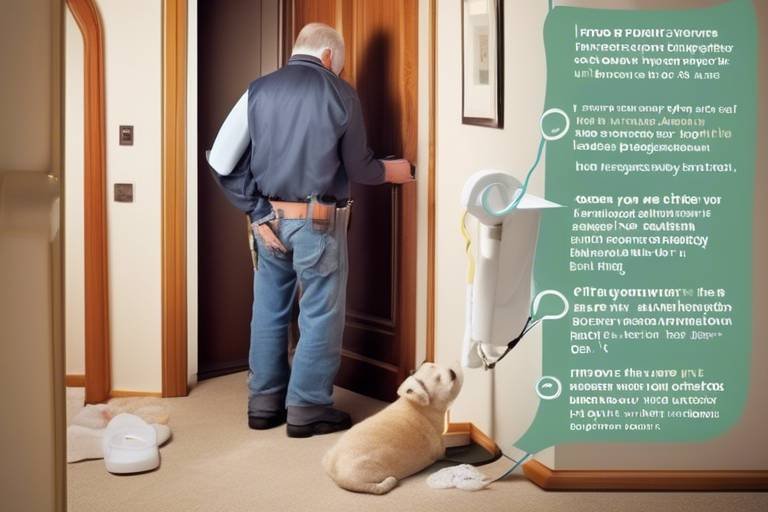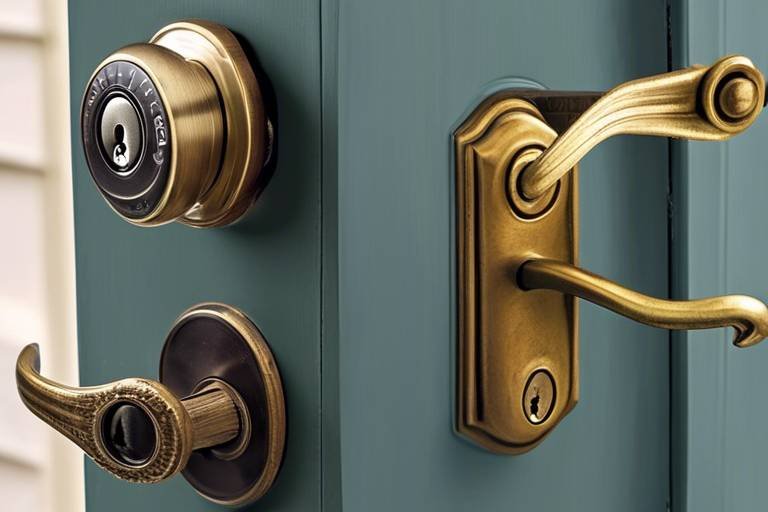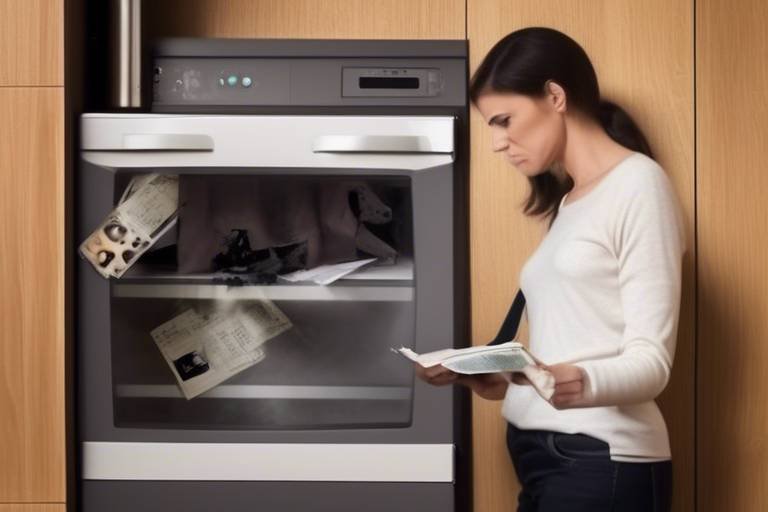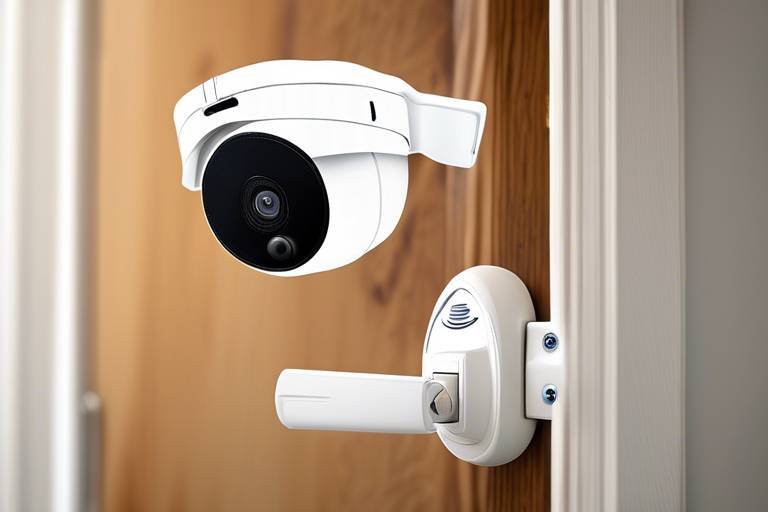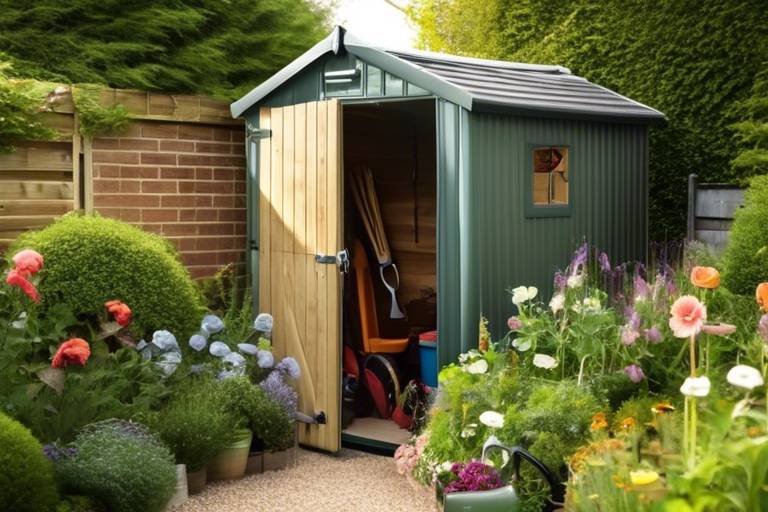Quick Home Safety Tips for Aging Seniors
As we age, our homes should be safe havens, but they can also become **potential traps** if we’re not careful. This article provides essential home safety tips tailored for aging seniors, focusing on practical measures to enhance their living environment and ensure their well-being. Think of it as a roadmap to navigating the golden years with confidence. Just like a sturdy bridge needs regular checks to stay safe, our homes require similar attention to detail. Let’s dive into the various aspects of home safety that can make a significant difference in the daily lives of seniors.
Identifying potential hazards in the home is the first step to ensuring safety. Picture this: you’re walking through your house, but instead of just admiring the decor, you’re on a mission to spot anything that could lead to a slip or a trip. Common risks include loose rugs, cluttered walkways, and poorly placed furniture. Effective evaluation of living spaces can be achieved by conducting a simple walkthrough. Take a notepad and jot down areas that could use some improvement. You might be surprised at how many hazards you uncover!
Let’s shed some light on a crucial aspect of home safety—adequate lighting! Imagine trying to navigate your home in the dark; it’s like walking through a maze blindfolded. Good lighting is essential for seniors to see where they’re going and avoid obstacles. Consider installing brighter bulbs, using motion-sensor lights, or even adding night lights in hallways and bathrooms. Not only does this enhance visibility, but it also adds a comforting glow to your home. Remember, a well-lit space is a **welcoming space**!
Falls are a leading cause of injury among seniors, but the good news is that many of them can be prevented. Think of your home as a fortress; you need to fortify it against potential invaders—like slips and falls! Here are some effective strategies:
- Remove tripping hazards such as loose cables and clutter.
- Consider adding non-slip mats in high-risk areas like the kitchen and bathroom.
- Install grab bars in strategic places like staircases and bathrooms for extra support.
By implementing these modifications, you’re not just improving safety; you’re also fostering independence, allowing seniors to move around with confidence.
The bathroom can be a dangerous place for seniors, often resembling a slippery battlefield. To minimize risks, it’s essential to take proactive measures. Installing grab bars near the toilet and inside the shower can provide crucial support. Additionally, using non-slip mats can help prevent falls on wet surfaces. Imagine stepping out of a shower onto a soft, secure mat instead of a slick tile floor—it’s a small change that can have a **big impact** on safety. Also, consider using a shower chair to make bathing easier and safer.
The kitchen presents unique hazards for aging seniors, from sharp knives to hot surfaces. To reduce the risk of accidents while cooking, consider the following safety measures: keep frequently used items within easy reach to avoid stretching or climbing, use oven mitts to handle hot pots, and ensure that smoke detectors are functional. Think of your kitchen as a culinary playground; keeping it safe allows for creativity without the worry of accidents. A well-organized kitchen not only enhances safety but also makes cooking a more enjoyable experience.
Being prepared for emergencies is vital for seniors. It’s like having an umbrella on a sunny day—you may not need it, but it’s better to be safe than sorry! Start by creating a simple emergency plan that includes important contacts, medical information, and a list of nearby hospitals. Ensure that seniors have easy access to help, whether it’s a personal alert system or a mobile phone they can use to call for assistance. Regularly review this plan and make updates as necessary. Remember, preparation is the key to peace of mind!
Modern technology can significantly enhance safety for seniors. Think of it as your trusty sidekick in the quest for a secure home! Devices such as smart home systems, medical alert devices, and even mobile apps can assist in daily living and emergency situations. For instance, smart speakers can be programmed to remind seniors to take their medications or alert them in case of emergencies. Embracing technology doesn’t just make life easier; it also provides an added layer of security that every senior deserves.
A strong support network is essential for seniors' well-being. Imagine having a safety net made up of family, friends, and community resources. Building connections can be as simple as scheduling regular check-ins with loved ones or joining local senior groups. These relationships provide not only emotional support but also practical help in times of need. Consider organizing a neighborhood watch or participating in community events to foster these connections. Remember, together we are stronger!
Routine home maintenance is key to preventing accidents. Just like a car needs regular oil changes, your home requires attention to stay safe and functional. Schedule regular checks for things like smoke detectors, loose railings, and plumbing issues. Creating a maintenance checklist can help keep track of what needs to be done. A well-maintained home is not just about aesthetics; it’s about creating a safe environment where seniors can thrive.
Q: What are the most common hazards in a senior's home?
A: Common hazards include loose rugs, poor lighting, cluttered spaces, and slippery surfaces, particularly in the bathroom and kitchen.
Q: How can I improve lighting in my home?
A: Consider using brighter bulbs, adding night lights, and installing motion-sensor lights in hallways and bathrooms for better visibility.
Q: What should I do to prevent falls?
A: Remove tripping hazards, install grab bars, and use non-slip mats in high-risk areas like the kitchen and bathroom.
Q: How can technology help seniors stay safe?
A: Smart home systems, medical alert devices, and reminder apps can enhance safety and provide assistance in emergencies.

Assessing Home Hazards
Identifying potential hazards in the home is the first step to ensuring safety, especially for our beloved aging seniors. It's like being a detective in your own home, where every corner could hold a hidden risk. So, how do we begin this crucial assessment? Start by walking through each room with a keen eye. Look for things that might trip someone up, like loose rugs or cluttered pathways. Did you know that over 30% of seniors experience falls each year? That statistic alone should motivate us to take action!
While you’re inspecting, consider the following common hazards:
- Loose Cables and Wires: These can create tripping hazards. Make sure to secure them properly.
- Uneven Flooring: Cracked tiles or warped floorboards can be dangerous. Look for ways to repair or cover these issues.
- Inadequate Lighting: Poorly lit areas can lead to accidents. Ensure that all spaces, especially stairways, are well-lit.
- Bathroom Slips: Wet floors can be slippery. Consider adding non-slip mats or rugs.
After identifying these hazards, it’s essential to prioritize them. Think of it like a game of whack-a-mole; you want to tackle the biggest threats first. For example, if the lighting in a hallway is dim, that should be your first fix. You can enhance visibility with brighter bulbs or even motion-sensor lights that turn on automatically. Remember, the goal is to create an environment where seniors can move freely without the fear of falling or getting injured.
Another effective strategy is to involve the seniors themselves in this assessment. Ask them about their daily routines and any challenges they face at home. This not only empowers them but also helps you understand their perspective on safety. They might point out hazards you hadn’t even noticed. For instance, they might mention that reaching for items on a high shelf is a struggle, which could lead to falls. Addressing these concerns can significantly improve their quality of life.
Once you've assessed the home, consider creating a simple report or checklist. This can help you track changes and improvements over time. You could even involve family members in this process, turning it into a fun and collaborative project. After all, safety is a team effort!
In conclusion, assessing home hazards is not just about eliminating risks; it's about creating a safe haven for seniors to thrive. By taking the time to evaluate their living spaces, we can significantly enhance their well-being and independence. So grab your notepad and start your assessment today—because a safer home leads to a happier life!
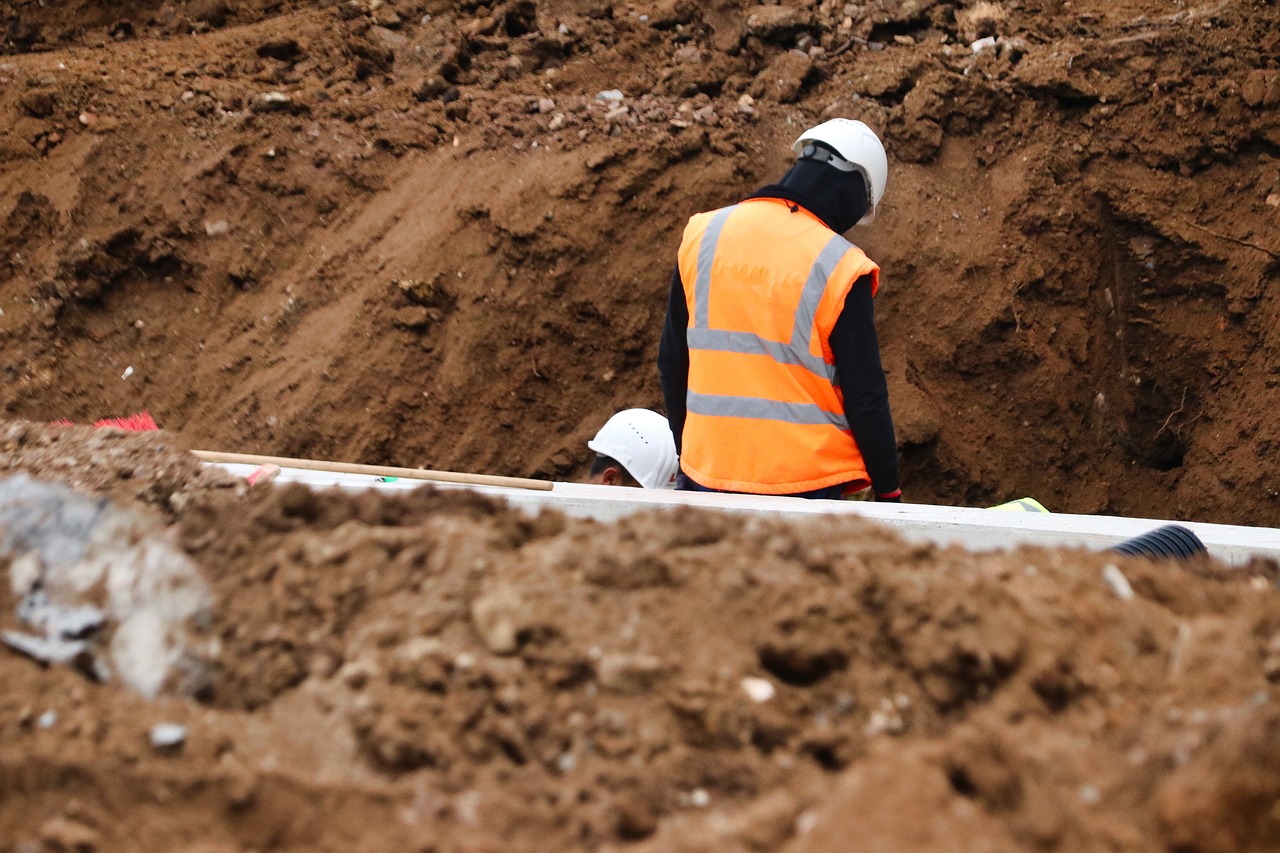
Improving Lighting
When it comes to home safety, adequate lighting is like the unsung hero. Imagine trying to navigate through a dark room; it’s like walking through a maze blindfolded! For aging seniors, poor lighting can be a significant risk factor that leads to falls and injuries. Therefore, enhancing the lighting in their homes is not just a matter of convenience, but a crucial step towards ensuring their safety and well-being.
Start by evaluating the existing lighting in each room. Are there areas that feel dim or shadowy? These are potential hazards waiting to happen. Consider using a mix of ambient, task, and accent lighting to create a well-lit environment. Ambient lighting provides overall illumination, while task lighting focuses on specific areas like reading nooks or kitchen counters. Accent lighting can highlight artwork or decor, adding a touch of warmth and personality to the space.
One simple yet effective change is to replace traditional bulbs with LED lights. Not only do they last longer, but they also provide brighter light without consuming much energy. Plus, they come in various color temperatures, so you can choose warmer tones for a cozy feel or cooler tones for a more alert environment. Installing motion sensor lights in hallways and bathrooms can also be a game-changer, automatically illuminating the path when someone approaches. This way, seniors don't have to fumble for switches in the dark.
Another tip is to ensure that light switches are easily accessible. Placing them at the entrance of each room can save seniors from the hassle of walking into a dark space. Additionally, consider using smart home technology to control lighting. Smart bulbs can be managed via smartphones or voice commands, allowing seniors to adjust lighting without getting up. This is especially helpful for those with mobility issues.
Don't forget about natural light. Encouraging sunlight to enter the home can significantly improve visibility and mood. Keep curtains and blinds open during the day, and consider using lighter paint colors on walls to reflect more light. If privacy is a concern, sheer curtains can offer a balance between light and seclusion.
Lastly, it’s essential to keep light fixtures clean and free of obstructions. Dust and dirt can dim the brightness, so a quick wipe down can make a world of difference. Encourage seniors to regularly check their lighting and replace any burnt-out bulbs promptly. After all, a well-lit home is a safer home!
- What type of lighting is best for seniors? Bright, warm LED lights are often recommended as they provide good visibility and are energy-efficient.
- How can I make my home brighter without major renovations? Use brighter bulbs, keep windows clear, and use mirrors to reflect light.
- Are motion sensor lights worth it? Absolutely! They enhance safety by providing light when needed without the hassle of switches.
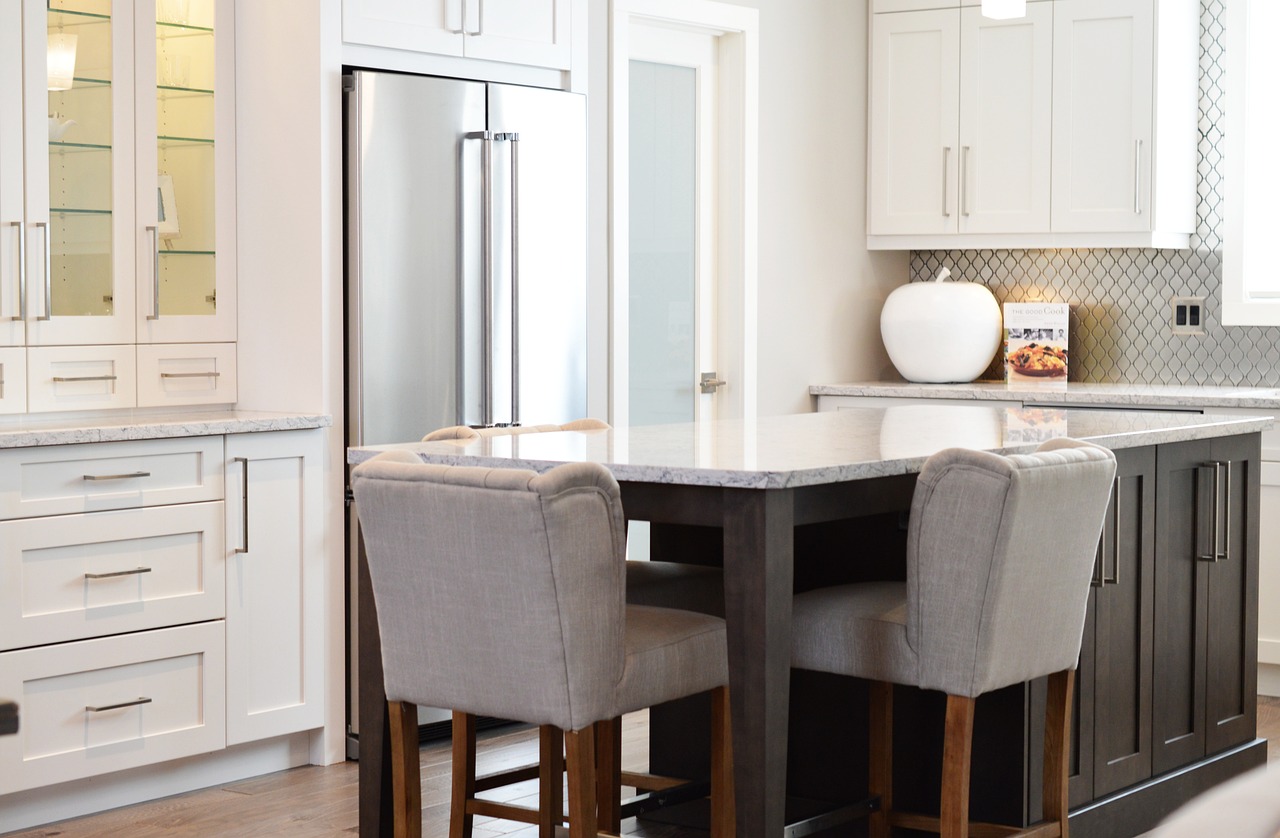
Fall Prevention Strategies
Falls are not just a minor inconvenience; they can be life-altering for seniors. The statistics are startling—one in four seniors falls each year, and these incidents can lead to serious injuries such as fractures or head trauma. So, how can we make our homes safer and reduce the risk of falls? It starts with understanding the common hazards and implementing effective strategies that cater specifically to the needs of aging individuals.
First and foremost, home modifications can play a crucial role in fall prevention. Simple changes can make a world of difference. For instance, consider installing grab bars in key areas such as bathrooms and staircases. These sturdy supports provide stability and confidence when moving from one place to another. Additionally, ensuring that the home is free of clutter can significantly reduce the chances of tripping. Have you ever tried walking through a room filled with scattered shoes or magazines? It’s like navigating an obstacle course!
Another effective strategy is to evaluate and improve the flooring throughout the home. Carpets should be secured to the floor, and any loose rugs should be removed or fastened down with non-slip backing. Hard surfaces, like tile or hardwood, can be slippery, so consider using non-slip mats in areas that are prone to moisture, such as the bathroom or kitchen. These mats not only enhance safety but also add a touch of style to your decor.
Lighting is yet another critical factor in preventing falls. Poorly lit areas can make even the most straightforward tasks risky. Installing brighter bulbs and using night lights in hallways and bedrooms can illuminate paths and reduce shadows that might obscure potential hazards. Motion-sensor lights are an excellent option, as they turn on automatically when someone approaches, ensuring that seniors always have light when they need it.
Moreover, it’s essential to encourage seniors to wear appropriate footwear. Shoes with non-slip soles can provide better traction and stability compared to slippers or socks. It might seem trivial, but the right pair of shoes can be a game-changer in preventing falls.
Lastly, regular exercise can significantly enhance balance and strength, which are vital in fall prevention. Activities like yoga, tai chi, or even simple stretching can improve coordination and flexibility. Encouraging seniors to participate in these physical activities not only helps them stay active but also fosters a sense of community and belonging.
In conclusion, fall prevention is a multifaceted approach that requires attention to detail and a proactive mindset. By making thoughtful modifications to the home, improving lighting, and promoting safe practices, we can create an environment that nurtures independence while minimizing the risk of falls. Remember, it’s not just about safety; it’s about enhancing the quality of life for our aging loved ones.
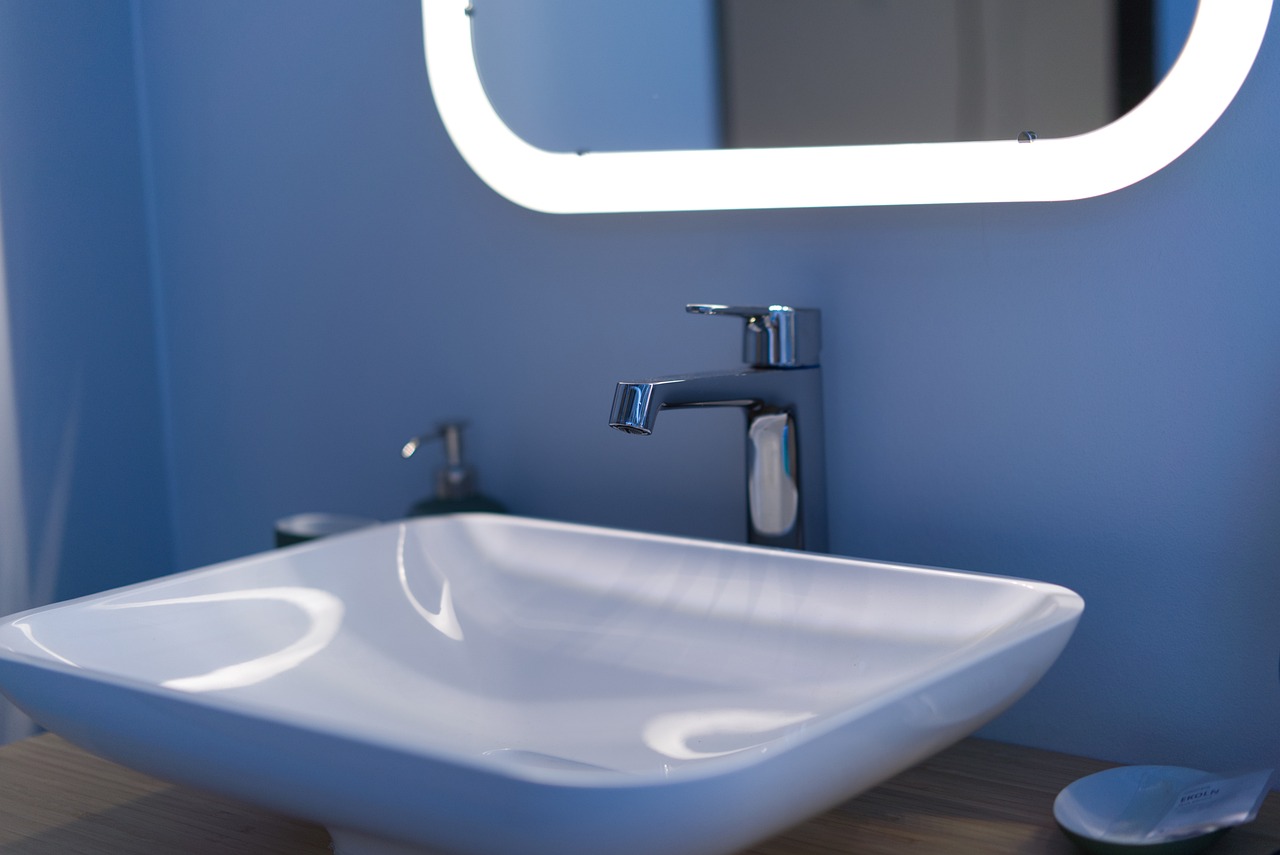
Bathroom Safety Tips
The bathroom can be a treacherous place for aging seniors, often filled with slippery surfaces and tight spaces that can lead to accidents. To transform this essential room into a safe haven, it’s crucial to implement a few simple yet effective safety measures. Think of the bathroom as a mini obstacle course; with the right precautions, you can navigate it with confidence and ease. So, let’s dive into some important bathroom safety tips that every senior should consider.
One of the most effective ways to enhance safety is by installing grab bars in strategic locations. These sturdy bars provide support when getting in and out of the tub or shower, making it easier to maintain balance. Ideally, grab bars should be placed near the toilet, in the shower stall, and beside the bathtub. When choosing grab bars, look for those that are securely anchored to the wall and can support a significant amount of weight. Remember, it’s not just about having them; it’s about having them installed correctly to ensure maximum safety.
Another critical aspect of bathroom safety is addressing the risk of slips and falls. The floor can become dangerously slick, especially when wet. To combat this, consider using non-slip mats or adhesive strips in the shower and on the bathroom floor. These mats provide traction and can significantly reduce the risk of slipping. Additionally, ensure that towels and other items are kept off the floor to avoid tripping hazards. It’s all about creating a clear and safe pathway, so you can move around without fear.
Lighting also plays a vital role in bathroom safety. Many bathrooms are often dimly lit, making it difficult to see potential hazards. Installing brighter light bulbs or adding motion-sensor lights can illuminate the space effectively. Imagine walking into a brightly lit bathroom where you can clearly see every corner; it makes a world of difference! Consider also using night lights to guide the way during late-night trips to the bathroom, ensuring that you can navigate safely even when the house is dark.
Furthermore, it’s essential to consider the height of bathroom fixtures. For seniors, reaching high shelves or bending down to access items can be challenging. Keep frequently used items within easy reach, and consider using a shower caddy to organize toiletries. This simple adjustment can minimize the need for awkward movements that might lead to falls or strains. It’s all about making your environment as user-friendly as possible.
Lastly, if you’re looking for a more comprehensive solution, you might want to consider installing a walk-in tub or a shower with a built-in seat. These features can make bathing safer and more comfortable. A walk-in tub eliminates the need to step over a high tub wall, while a shower with a seat allows for a secure resting place while bathing. Think of it as upgrading your bathroom into a safe sanctuary where you can relax without worry.
In conclusion, prioritizing bathroom safety is not just about preventing accidents; it’s about enhancing quality of life. By making these simple adjustments, you can create a safer and more enjoyable bathroom experience. Remember, it’s never too late to take action. Why not start today and transform your bathroom into a safer space?
Q1: What are grab bars, and where should I install them?
A1: Grab bars are sturdy bars that provide support and stability. They should be installed near the toilet, in the shower, and beside the bathtub to help seniors maintain balance.
Q2: How can I prevent slips in the bathroom?
A2: Use non-slip mats or adhesive strips in the shower and on the bathroom floor. Keeping the area dry and free of clutter also helps reduce the risk of slipping.
Q3: Is it worth investing in a walk-in tub?
A3: Yes! A walk-in tub can significantly enhance safety by eliminating the need to step over a high tub wall, making bathing easier and safer for seniors.
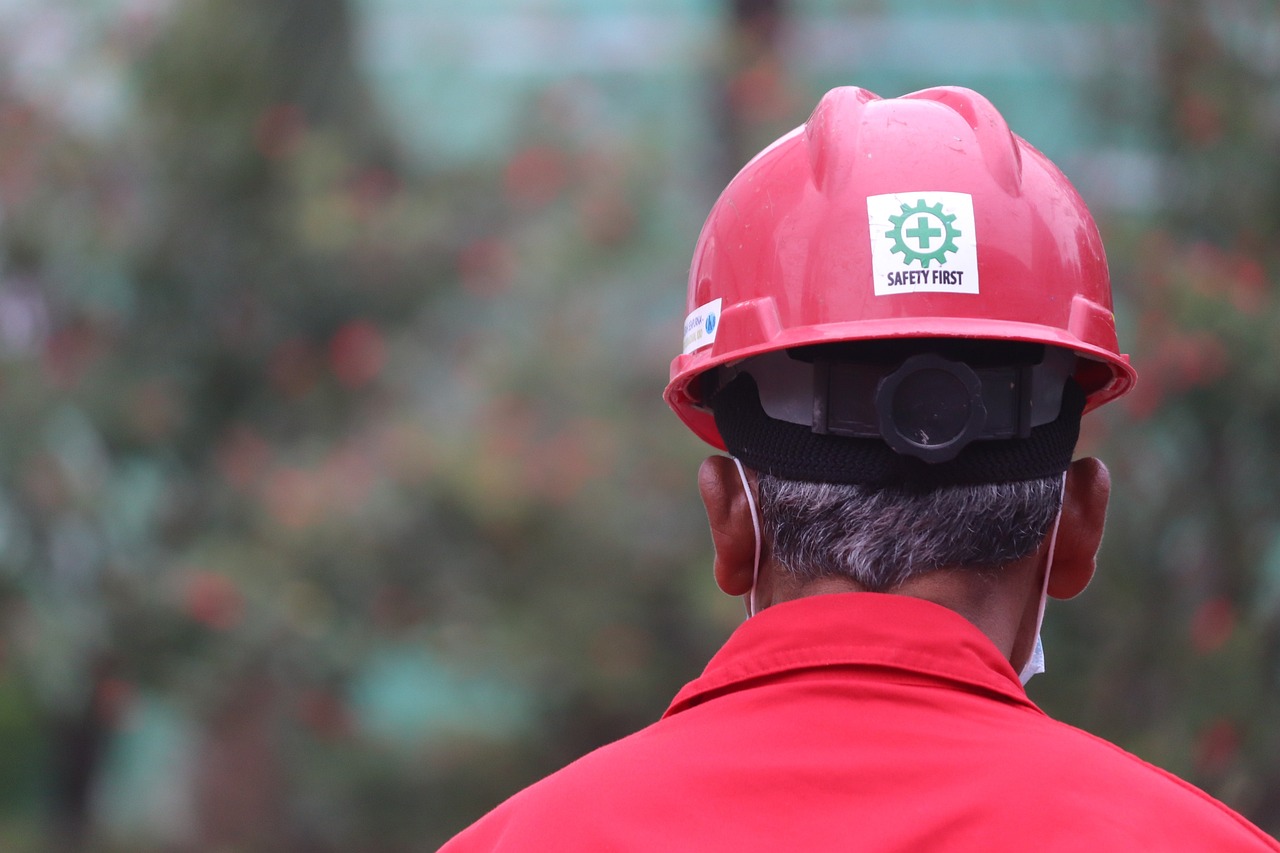
Kitchen Safety Measures
The kitchen is often referred to as the heart of the home, but for aging seniors, it can also be a place filled with potential hazards. To ensure that your loved ones can continue to enjoy cooking and preparing meals safely, it's essential to implement some effective kitchen safety measures. First and foremost, consider the layout of the kitchen. Is everything within easy reach? Seniors may have difficulty bending down or reaching high shelves, so organizing items in a way that minimizes stretching or straining is crucial. For instance, keeping frequently used items like pots, pans, and utensils on lower shelves can make a world of difference.
Another important aspect is the use of appropriate kitchen tools. Investing in ergonomic utensils can greatly reduce the strain on hands and wrists. Look for items with easy-grip handles or those designed specifically for individuals with limited dexterity. Additionally, non-slip mats can provide extra stability while standing at the counter or sink. These mats not only prevent slips but also reduce fatigue during prolonged periods of cooking.
When it comes to cooking appliances, safety should always be a priority. Ensure that stoves have easy-to-read knobs and consider using appliances with automatic shut-off features. This can prevent accidents in case a senior forgets to turn off the stove after cooking. Furthermore, it's wise to keep a fire extinguisher in the kitchen and ensure that everyone knows how to use it. Regularly checking the extinguisher's expiration date is also vital.
In addition to these measures, it's essential to be mindful of food safety practices. Seniors may have compromised immune systems, making them more susceptible to foodborne illnesses. Here are some key food safety tips:
- Always wash hands before handling food.
- Keep raw meats separate from other foods to prevent cross-contamination.
- Use a food thermometer to ensure that food is cooked to safe temperatures.
Lastly, consider the role of technology in enhancing kitchen safety. Smart kitchen devices can provide reminders for cooking times or even alert caregivers if something goes awry. For example, smart smoke detectors can send notifications to smartphones, ensuring that help is on the way if a fire occurs. By combining these practical measures with modern technology, we can create a safer cooking environment for seniors, allowing them to maintain their independence while minimizing risks.
Q: What are some common kitchen hazards for seniors?
A: Common hazards include slippery floors, sharp utensils, and the risk of burns from hot surfaces. Ensuring proper organization and using safety tools can help mitigate these risks.
Q: How can I make my kitchen more accessible for seniors?
A: Organize frequently used items within easy reach, use ergonomic kitchen tools, and consider installing pull-out shelves or drawers to reduce bending and stretching.
Q: Are there any specific appliances that are safer for seniors?
A: Yes! Look for appliances with automatic shut-off features, easy-to-read controls, and those that require minimal physical effort to operate.
Q: How can technology enhance kitchen safety?
A: Smart devices can provide alerts for cooking times, monitor kitchen conditions, and even notify caregivers in case of emergencies, making them invaluable for senior safety.

Emergency Preparedness
Being prepared for emergencies is not just a good idea; it’s a lifeline, especially for aging seniors. Imagine a scenario where a sudden storm knocks out power or an unexpected health issue arises. In such moments, having a solid emergency plan can make all the difference. So, how can seniors ensure they are ready for the unexpected? Let’s dive into some practical steps that can help.
First and foremost, it's essential to have an emergency plan in place. This plan should outline what to do in various situations, whether it’s a natural disaster, a medical emergency, or even a fire. Consider creating a written document that includes the following:
- Emergency contacts: List family members, neighbors, and medical contacts who can help in a crisis.
- Evacuation routes: Know the best ways to exit your home and reach safety, especially if you live in an area prone to floods or wildfires.
- Meeting points: Designate a safe location where everyone can gather if you have to leave your home.
But wait, there’s more! It’s also wise to keep an emergency kit stocked with essential supplies. This kit should be easily accessible and contain items such as:
- Non-perishable food and water for at least three days
- A flashlight and extra batteries
- A first aid kit
- Medications and medical supplies
- An emergency blanket
In addition to physical preparations, consider the role of technology in your emergency strategy. Devices like personal alert systems or medical alert bracelets can provide peace of mind. They allow seniors to call for help with just the push of a button. Furthermore, smartphone apps can help track emergency contacts and provide alerts for severe weather or other emergencies. It’s like having a safety net right in your pocket!
Another crucial aspect of emergency preparedness is communication. Make sure that all family members understand the emergency plan and know how to execute it. Regularly practice drills to ensure everyone knows their role. This can help alleviate anxiety during an actual emergency, as familiarity breeds confidence.
Finally, don’t forget about community resources. Local organizations often offer support during emergencies, whether through shelters, food banks, or health services. Connecting with neighbors and community groups can create a robust support network that can be invaluable in times of need.
In conclusion, while we can’t predict the future, we can certainly prepare for it. By taking proactive steps in emergency preparedness, seniors can significantly enhance their safety and well-being. So, take a moment to assess your current situation and consider what improvements can be made. Remember, a little preparation goes a long way!
Q: What should I include in my emergency kit?
A: Your emergency kit should include non-perishable food, water, a flashlight, batteries, a first aid kit, medications, and an emergency blanket.
Q: How can I ensure my family understands the emergency plan?
A: Regularly review the plan with your family and practice drills to ensure everyone knows their roles and responsibilities.
Q: What technology can help with emergency preparedness?
A: Personal alert systems, medical alert bracelets, and smartphone apps for emergency alerts can enhance your preparedness.
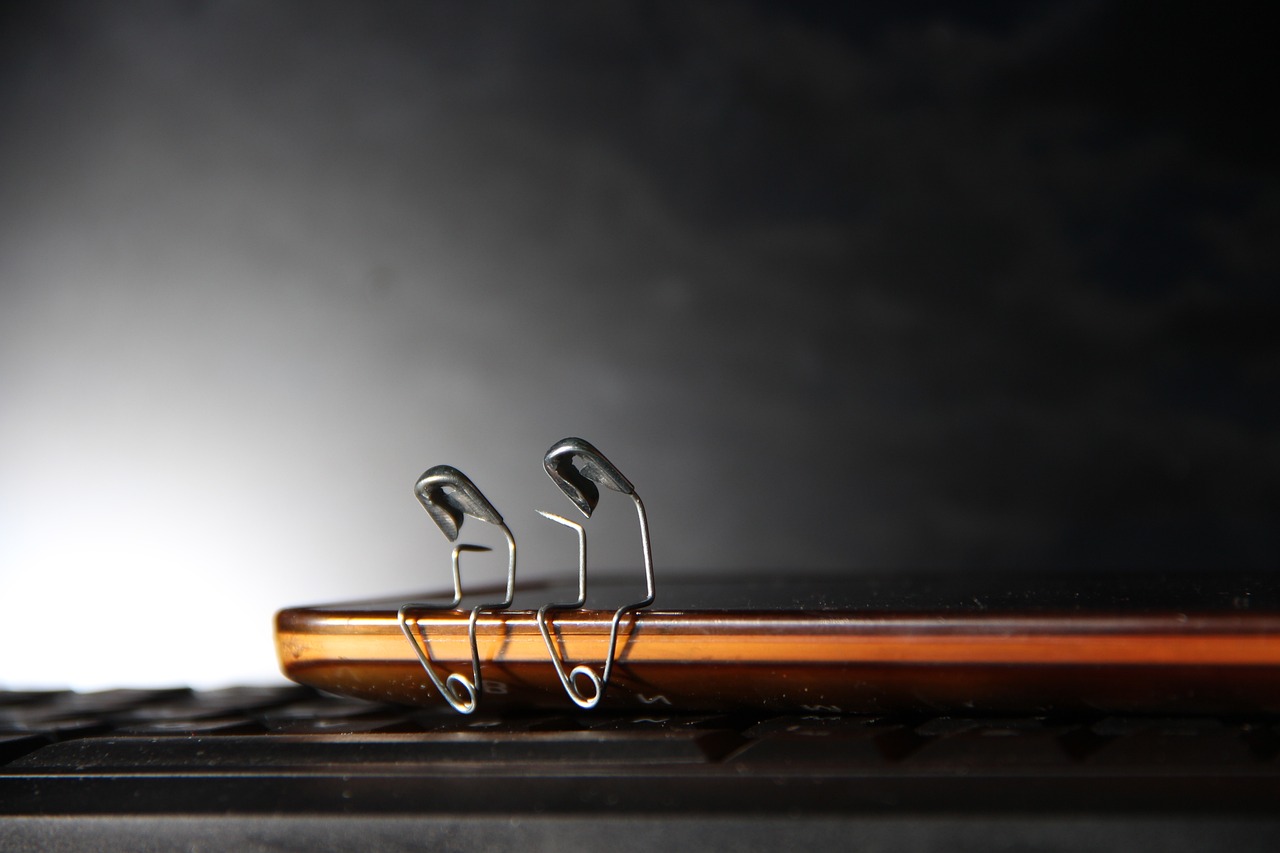
Technology for Safety
In today's fast-paced world, technology has become a lifeline for many, especially for our aging seniors. Imagine a world where a simple device can alert someone if you’ve fallen, or a smartphone app can remind you to take your medication. It's almost like having a personal assistant at your fingertips! These modern innovations are not just conveniences; they're essential tools that can significantly enhance the safety and well-being of seniors living independently.
One of the most vital technologies available today is the medical alert system. These devices, often worn as pendants or wristbands, allow seniors to call for help with just the press of a button. They are particularly useful in emergencies, providing peace of mind for both the seniors and their families. With features like fall detection and 24/7 monitoring, these systems ensure that help is always within reach. Can you imagine the comfort this brings to both seniors and their loved ones?
Another exciting advancement is the use of smart home devices. These gadgets can automate various aspects of daily living, reducing the risk of accidents. For instance, smart lights can be programmed to turn on automatically when someone enters a room, ensuring that seniors never have to navigate through darkness. Similarly, smart thermostats can help maintain a comfortable living environment, preventing situations where seniors may suffer from extreme temperatures.
Additionally, there are health monitoring devices that track vital signs and alert caregivers or family members if something seems amiss. Wearable technology, like fitness trackers, can monitor heart rates, activity levels, and even sleep patterns. This data can be invaluable for healthcare providers, allowing for timely interventions when necessary. Imagine being able to share your health data directly with your doctor without having to schedule an appointment!
Moreover, smartphones and tablets equipped with user-friendly apps can help seniors manage their daily activities. For example, medication management apps can send reminders for when to take pills, ensuring that seniors stay on track with their health regimens. These apps can also provide easy access to emergency contacts and local resources, making it easier for seniors to reach out for help when needed.
While technology can seem daunting, many devices are designed specifically with seniors in mind, featuring large buttons, clear displays, and easy-to-understand instructions. It’s essential to choose devices that suit the individual's needs and preferences. After all, the goal is to enhance safety without adding unnecessary complexity to their lives.
In conclusion, embracing technology for safety is not just about keeping up with trends; it’s about creating a secure and comfortable living environment for aging seniors. By integrating these tools into their daily lives, we can empower them to maintain independence while ensuring they have the support they need.
- What is a medical alert system? A medical alert system is a device that allows seniors to call for help in emergencies by pressing a button.
- How can smart home devices help seniors? Smart home devices can automate tasks, improve safety, and enhance comfort, such as automatically turning on lights or adjusting the thermostat.
- Are health monitoring devices easy to use? Yes, many health monitoring devices are designed with seniors in mind, featuring user-friendly interfaces and straightforward instructions.
- What types of apps are beneficial for seniors? Apps for medication management, emergency contacts, and health monitoring can significantly assist seniors in their daily lives.
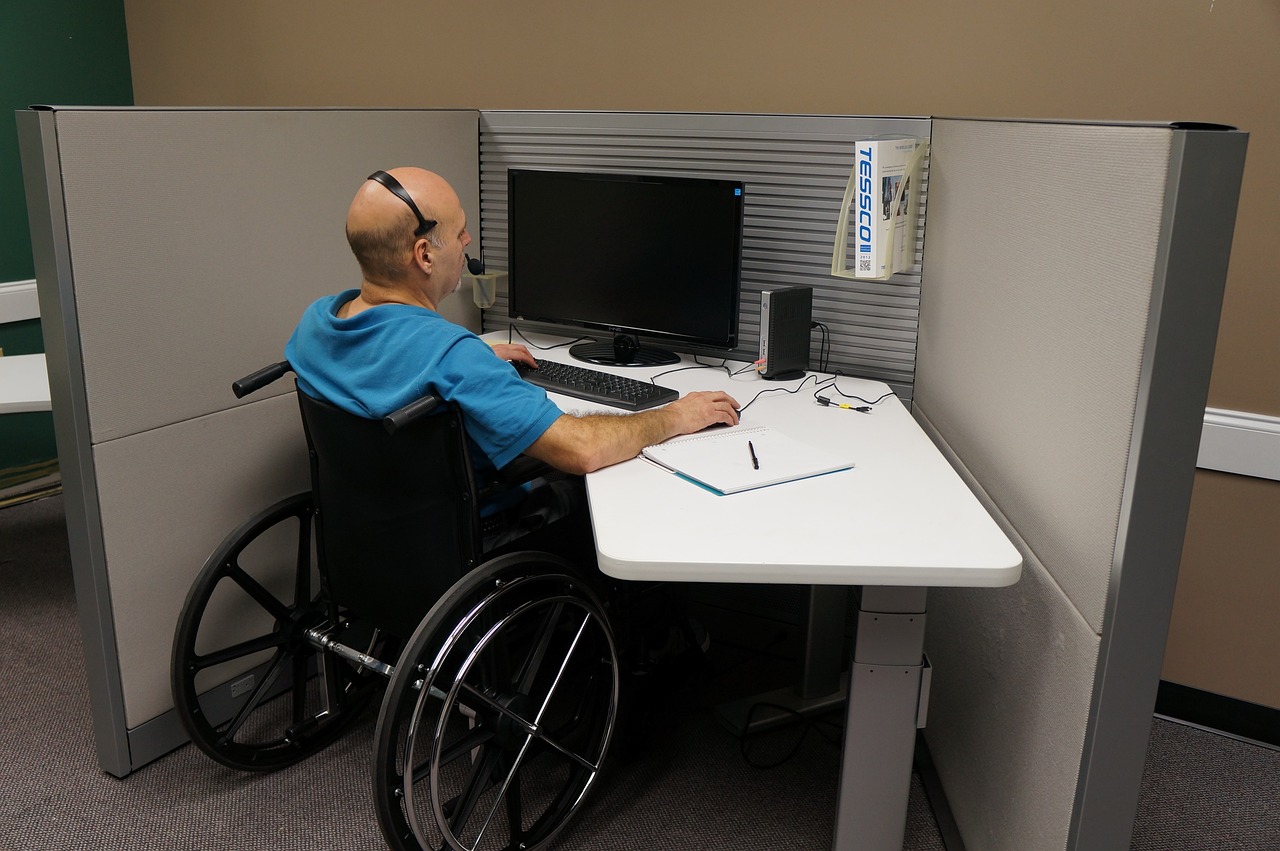
Creating a Support Network
Building a strong support network is essential for the well-being of aging seniors. Just like a sturdy bridge needs solid pillars to hold it up, seniors need a reliable circle of family, friends, and community resources to navigate the challenges of daily life. But how do you go about creating this network? It starts with communication and connection. Reach out to family members and friends, even if it’s just a quick phone call or a text message. These small gestures can make a big difference in feeling connected and supported.
In addition to family and friends, consider engaging with local community resources. Many communities offer programs specifically designed for seniors, such as social clubs, exercise classes, and volunteer opportunities. These not only provide a chance to meet new people but also foster a sense of belonging. Imagine the joy of sharing stories and laughter with others who understand your experiences. It's like finding a warm blanket on a chilly day.
Another effective way to build your support network is to join online forums or social media groups tailored for seniors. These platforms can be a treasure trove of information and camaraderie. You can share tips, ask questions, or simply chat with others who are in similar situations. It’s like having a virtual coffee shop where you can sip your favorite drink while engaging with others.
Don’t forget about professional support as well. Engaging with healthcare providers, social workers, or geriatric care managers can be invaluable. They can help coordinate care, provide resources, and connect you with additional support services. Think of them as your personal guides, helping you navigate the sometimes complicated world of senior living.
To illustrate the importance of a support network, let’s take a look at a simple table that highlights some key components:
| Support Network Component | Benefits |
|---|---|
| Family and Friends | Emotional support, companionship, and assistance with daily tasks. |
| Community Resources | Access to social activities, health services, and volunteer opportunities. |
| Online Communities | Connection with others, sharing of experiences, and access to information. |
| Professional Support | Guidance, care coordination, and resources for additional help. |
In conclusion, creating a support network is not just about having people around you; it’s about fostering meaningful connections that enrich your life. So, take that first step today! Whether it’s reaching out to an old friend or exploring community programs, remember that every little effort counts. Just like planting a garden, nurturing these relationships will lead to a flourishing support system that can make all the difference in your daily life.
Q: How can I find community resources for seniors in my area?
A: You can start by checking local government websites, libraries, or community centers. Many have dedicated sections for senior services.
Q: What are some ways to maintain relationships with family and friends?
A: Regular phone calls, video chats, or even scheduling monthly meet-ups can help keep those connections strong.
Q: Is it necessary to hire a professional for support?
A: It depends on your individual needs. If you feel overwhelmed or need specific guidance, a professional can provide valuable assistance.
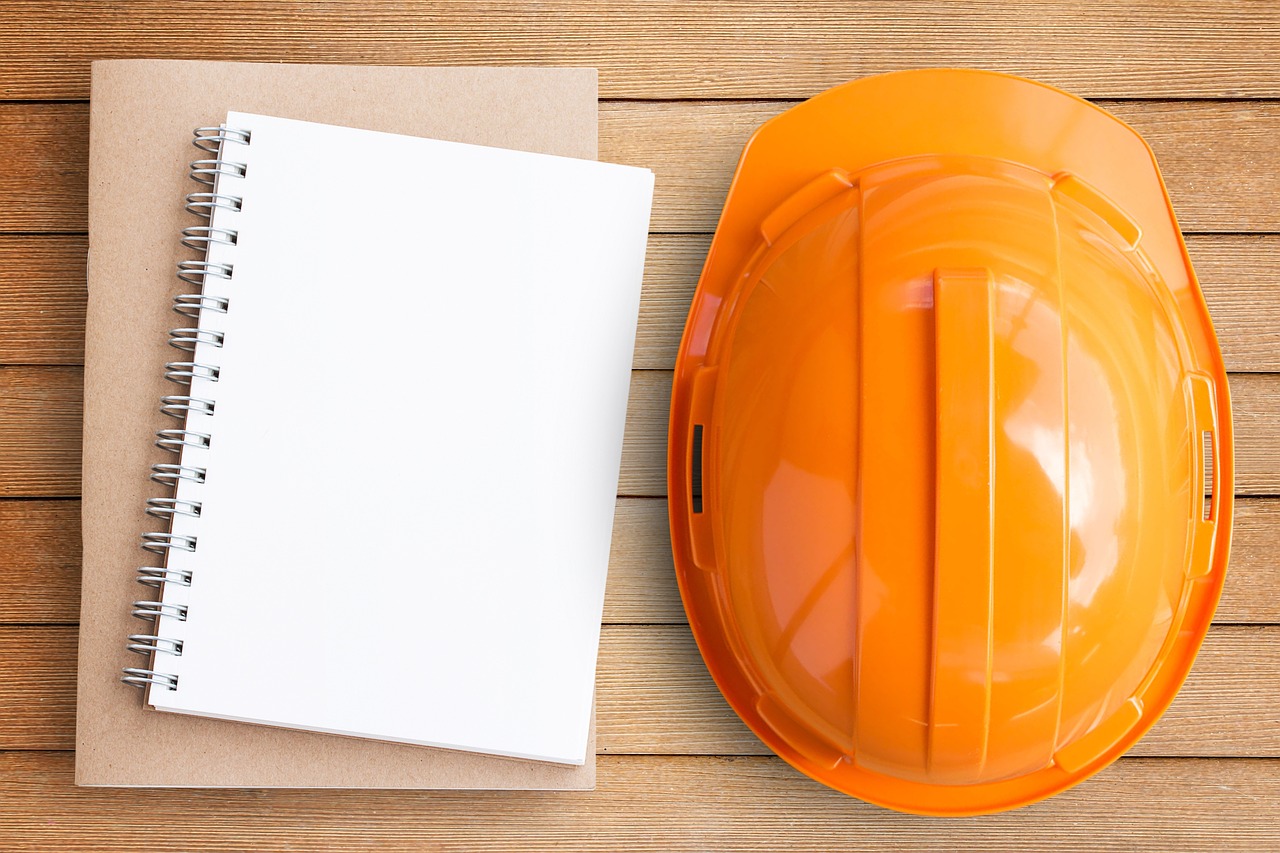
Regular Home Maintenance
When it comes to ensuring safety for aging seniors, is not just a chore; it’s a lifeline. Think of it as a routine check-up for your house, much like the visits we make to the doctor. Just as we want to catch health issues early, keeping an eye on the home can prevent accidents and injuries before they happen. Regular maintenance helps identify potential hazards and ensures that everything is functioning as it should. So, what are some key areas to focus on?
First and foremost, it’s essential to inspect the floors and walkways. Are there any loose floorboards or uneven surfaces? These can be serious tripping hazards. Regularly checking for wear and tear can help prevent falls. If you notice any issues, consider getting them repaired promptly. Additionally, keeping pathways clear of clutter is crucial. A simple rule of thumb is to always have a clear path from one room to another, especially in high-traffic areas.
Next, let’s talk about lighting. It’s amazing how much a little illumination can improve safety. Check to make sure that all light bulbs are functioning and that switches are easily accessible. Consider installing brighter bulbs or even motion-sensor lights in dark areas like hallways or staircases. This not only enhances visibility but also reduces the risk of stumbling in the dark.
Now, don’t forget about the bathroom. This space can be particularly hazardous for seniors. Regularly check for mold, slippery surfaces, and ensure that grab bars are securely fastened. It might be worth investing in non-slip mats and ensuring that all necessary items are within easy reach to avoid stretching or bending too far.
Another vital area is the kitchen. Make sure appliances are in good working order and that there are no leaks or spills on the floor. Regularly clean up any food debris to prevent slips and falls. It’s also a good idea to keep frequently used items at waist level to avoid the need for climbing or reaching high shelves.
Lastly, consider establishing a maintenance schedule. This could be as simple as setting reminders on your phone or calendar for regular checks. Here’s a basic outline of what to include:
| Task | Frequency |
|---|---|
| Inspect smoke detectors | Monthly |
| Check for leaks in the kitchen and bathroom | Monthly |
| Test emergency lighting | Every 6 months |
| Deep clean carpets and floors | Every 6 months |
| Inspect handrails and grab bars | Every 6 months |
By taking these proactive steps, you can ensure that your home remains a safe haven for you or your loved ones. Remember, a little bit of regular maintenance goes a long way in preventing accidents and creating a comfortable living environment. So, take a moment to look around and see what needs attention. After all, your home should be a place where you feel secure and at ease.
Q: How often should I check my smoke detectors?
A: It's recommended to test smoke detectors monthly and replace the batteries at least once a year.
Q: What are some signs that I need to make home repairs?
A: Look for leaks, cracks in walls, loose floorboards, and any signs of wear and tear. If something feels off, it’s best to get it checked.
Q: Can I do home maintenance myself?
A: Many tasks can be done by yourself, but for complex repairs or installations, it’s wise to hire a professional.
Q: How can I make my home safer without spending a lot of money?
A: Simple changes like decluttering, improving lighting, and securing rugs can significantly enhance safety without breaking the bank.
Frequently Asked Questions
- What are some common home hazards for seniors?
Common home hazards for seniors include slippery floors, poor lighting, cluttered walkways, and loose rugs. Regularly assessing your living space can help identify these risks and allow you to make necessary changes to enhance safety.
- How can I improve lighting in my home?
Improving lighting can be as simple as replacing bulbs with brighter ones or adding lamps in dark corners. Consider using motion-sensor lights in hallways and bathrooms to ensure visibility at all times, especially during nighttime trips.
- What are effective fall prevention strategies?
To prevent falls, consider installing grab bars in bathrooms, removing loose rugs, and ensuring that all areas of your home are well-lit. Regularly reviewing your medications with a healthcare provider can also help manage side effects that may affect balance.
- What safety measures should I take in the bathroom?
Essential bathroom safety measures include installing non-slip mats, using grab bars near the toilet and shower, and keeping frequently used items within easy reach to avoid stretching or bending too much.
- How can I make my kitchen safer?
To enhance kitchen safety, keep sharp objects out of reach, use non-slip mats, and ensure that appliances are in good working order. It’s also helpful to organize your kitchen so that everything is easily accessible without the need for climbing or stretching.
- What should be included in an emergency preparedness plan?
Your emergency preparedness plan should include a list of emergency contacts, a designated meeting place, and easy access to important documents. It's also wise to have a small emergency kit with essentials like water, medications, and a flashlight.
- How can technology enhance safety for seniors?
Technology can significantly improve safety through devices like medical alert systems, smart home devices that control lighting or locks, and apps that remind seniors to take medications or check in with family members.
- Why is building a support network important?
A strong support network provides emotional and practical assistance, helping seniors feel connected and secure. Engaging with family, friends, and community resources can offer additional safety and companionship.
- What regular maintenance should I perform in my home?
Regular maintenance includes checking smoke detectors, inspecting handrails, ensuring that all lights are functioning, and addressing any leaks or cracks in the home. Keeping up with these tasks can prevent accidents and ensure a safe living environment.


